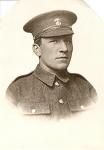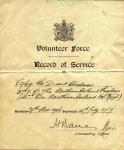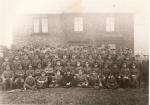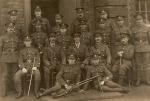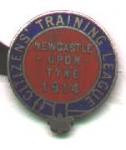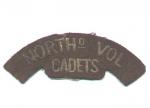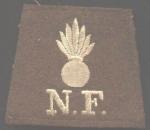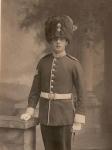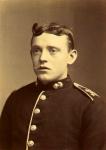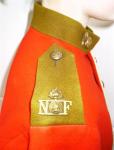-
Posts
1,065 -
Joined
-
Last visited
-
Days Won
1
Content Type
Profiles
Forums
Blogs
Gallery
Events
Store
Everything posted by Graham Stewart
-

WW1 pair.
Graham Stewart replied to Chris Boonzaier's topic in Great Britain: Orders, Gallantry, Campaign Medals
I posted something earlier on in another post regarding Medal Index Cards and have copied it again for reference. The charges for MIC's really are a scam, when better documents regarding Australian and Canadian soldiers come virtually free and it's been a bone of contention for many years. At the same time if it hadn't been for the Western Front Association the Medal Idex Cards themselves were being earmarked for destruction, so you would have had to rely on the grainy microfiche copies that you got from the NA. Understandably people are often disappointed when they download the MIC, but the MIC was never intended as the "be all and end all" of a soldiers service. Medal Roll Books themselves often contain more information, as do Silver War Badge Lists. Other information can be gleaned from Enquiry Lists, Police Gazettes(for deserters), unit War Diaries, Absent Voters Lists and local newspapers. These brought togehter can fill in the gaps of individuals, although they certainly don't beat a mans original service documents, which for those of you who are unfamiliar with them, consisted of two sets. One set accompanied a man on service and the other set remained with the officer i/c records at the unit Depot. All aspects of keeping these records were laid down in Queens/Kings Regulations. This is what I wrote earlier;- "Medal Index Cards are really no more than that, an Index Card which guides you to the relevant pages of the Medal Roll Books. The information that both of these sources contain refer only to units that the recipient served overseas with and not units served at home with. All of tht relevent information is contained in the History Sheet of their service records, many of which were destroyed during the Blitz. These records are often referred to as 'unburnt' or 'burnt series records', and often the 'unburnt' records are referred to as "Pension Documents". This is infact incorrect as they are a mans service records, which were sent to the Ministry of Pensions for claims processing only and thus were fortunate enough to escape destruction. Examination of any of these records show how invaluable they are to researchers and I have examined many of those to the Northumberland Fusiliers and find them a great source of information. Sadly unlike Australia we have never had the cash resources which could see the records digitalised and sorted(some are mixed up) which would make them more readable. Currently they are stored in climate controlled conditions in a salt mine somewhere in Cheshire and not at the National Archive." -

Medal Card
Graham Stewart replied to Stuart Bates's topic in Great Britain: Militaria: Badges, Uniforms & Equipment
Medal Index Cards are really no more than that, an Index Card which guides you to the relevant pages of the Medal Roll Books. The information that both of these sources contain refer only to units that the recipient served overseas with and not units served at home with. All of tht relevent information is contained in the History Sheet of their service records, many of which were destroyed during the Blitz. These records are often referred to as 'unburnt' or 'burnt series records', and often the 'unburnt' records are referred to as "Pension Documents". This is infact incorrect as they are a mans service records, which were sent to the Ministry of Pensions for claims processing only and thus were fortunate enough to escape destruction. Examination of any of these records show how invaluable they are to researchers and I have examined many of those to the Northumberland Fusiliers and find them a great source of information. Sadly unlike Australia we have never had the cash resources which could see the records digitalised and sorted(some are mixed up) which would make them more readable. Currently they are stored in climate controlled conditions in a salt mine somewhere in Cheshire and not at the National Archive. -
For those unaware the Great War had its own 'Home Guard' which began as ad hoc units which were brought together and known as the Volunteer Training Corps, who were primarily clothed in grey/green. Government recognition was slow in coming to these Corps and it wasn't until July 1916 that they got Government backing and were then known as the Volunteer Force and the VTC became the new Volunteer Regiments. Khaki uniforms were also allowed for the first time since the formation of the VTC. By 1918 the War Office began affiliation with county regiments and old pre-1908 Volunteer titles were adopted. Alderman John Fitzgerald, Lord Mayor of Newcastle and Commandant Newcastle-upon-Tyne V.T.C. Graham.
-
Thats a one that I don't have, but I do have Canons "Historical Records of the Fifth Foot", which I believe was a reprint of the book illustrated. However my copy was previously owned by "N.I. Uxley 5th Fusiliers" and "Capt Harold A. Ryott, 6th Bn,N.F." and dated 15/7/1916, but as my scanner is currently kaput I can't provide illustrations. Graham.
-
An even rarer cloth shoulder title to the 20th Bn, Northumberland Fusiliers(1st Tyneside Scottish). The coloured lettering indicated the battalion 21st were yellow; 22nd were black and 23rd were light blue. However many years ago I interviewed an old 'B' Coy, 22nd Bn man who served in 1918 and he clearly remembered the titles and when I asked was it black embroided lettering, he was quite certain his was 'yellow' lettering. By this time two battalion had been disbanded(20th & 21st) so one wonders if surplus cloth titles were being worn as 'company' indicators rather than battalion. Graham.
-
Leigh, The tunic with the additional piping to the rear is for the band, as recently noticed in some St.Georges Gazettes. The holes are put in expertly put in with some sort of punch and are for a Territorial title, as there is no evidence of holes for the one piece 'bomb over NF' and besides you rarely see these titles on scarlet tunics worn by regulars, even though the embroided shoulder straps were abolished in May 1910 and the new shoulder titles introduced. It would appear that the new pattern tunics for which these titles were designed, were already going to be replaced with the new 1913 pattern tunic and so when it was introduced the new one piece 'N/bomb/F' titles were being taken into wear with it. The tunics which were minus embroided titles, but retained the round ended and white piped strap, seem to have found their way to the Territorial Force, where 'T' titles predominate. This shoulder strap shows a typical Territorial arrangement on an SD strap, but not all 'bomb over NF' titles were soldered together, nor were the 'T/numeral' soldered to it, especially during the Great War, when 'make and mend' was the name of the game. Graham.
-
The 1881 pattern tunic with jampot cuffs, seen c.1900/02. Closer magnification on his shoulder srtap shows the addition of a numeral between the bomb and NF, which would indicate the 5th(Militia)Bn, NF, as opposed to a Volunteer Battalion member who would have worn an Austrian knot on the cuff. Graham.
-
Leigh, The shoulder title on the tunic is the 'Quo Fasa Vocant' pattern, but there are many O/R's patterns of the same title with the correct spelling and I think I have about six variations, mainly based on flame pattern. This as another NF 1913 pattern tunic, but modified years later and it is unusual in the fact that it is piped at the back and at the back of the sleeves which may indicate being worn by the 'band'. The shoulder titles in your photo aren't Territorial titles, but without a date you can't really determine if they're TF or not, as post WWI they were indistiguishable from regulars, especially during civic occassions. Pre-WWI Territorials wore a tunic of a slightly different pattern to the regulars as no titles were woven into the straps. Graham.
-
Leigh, Cracking NF photo, wheres that one turned up from? Anyway not so sure that they're Territorials, but do known they're wearing the 1913 pattern tunic with the new pointed shoulder strap, which didn't have any white piping to the edge. The building in the back ground could possibly be Fenham Barracks and the trumpeters banners appear to be the coat of arms of the City of Newcastle. So I'm wondering are these two trumpeters from the Depot for occassions in which the Lord Mayor of Newcastle is present i.e. Civic processions and such like? This is the 1913 pattern tunic.
-
Tony, Just got back from working away and saw your addition to Leighs post regarding your relative, and please except my apologies but there are some errors in the information that you have on him. Firstly he wasn't an original member of the Tyneside Scottish, he did infact enlist into the 3rd(Reserve)Bn, Northumberland Fusiliers, which is why he has a '3-' prefix to his number 3/8472. The 3rd(Res)Bn, were Special Reservists which were formed from the old Militia in 1908, although I do know for a fact that he isn't a pre-war Reservist and he is a wartime enlistment. At the same time that number 3/8472 was issued in August 1914, again my records show that a Pte 3/8461 Pte John Devlin of Low Walker had enlisted on the 8th August 1914 and considering all regimental numbers were issued in numerical order and Devlin is a mere 11 numbers in front then it's obvious he enlisted at the same time. His place of enlistment is Newcastle, but the 3rd(Res)Bn were actually at Scotts House Camp, East Boldon, Durham, which is where most of the recruits into the battalion did their training. Nor did the battalion serve overseas as men were transferred from it to other NF Battalions. In your relatives case it was to the 9th(Service)Bn,N.F. and it was with them that he was wounded on the 5th July 1916, which is mentioned in the Battalion War Diary. The wound was later announced in the regimental journal, but not until September 1916, but this was mainly due to the masses of Somme casualties and delays in reporting. On recovery he moved to the 12th(Service)Bn,N.F. and was either wounded again or taken ill as he was then posted to 'A' Company, 23rd(Service)Bn,N.F.(4th Tyneside Scottish) with whom he was killed. There is a twist to this though as I believe his Medal Roll Sheet shows him again serving with the 12th Bn,N.F. after the 23rd Bn. Graham.


